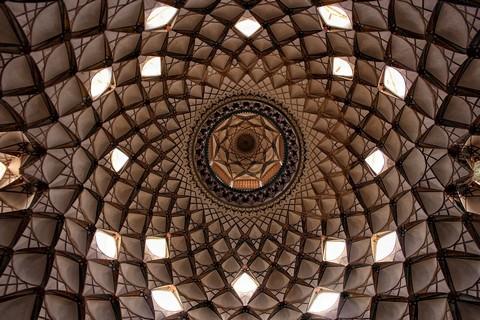



A drop ceiling or false ceiling has been in trend for quite some time, especially in contemporary architecture of both residential and commercial buildings.
A false ceiling is also called a drop ceiling because it is dropped or hung from the main ceiling as a second ceiling. Covering the main ceiling with a second ceiling has its advantage - one can get additional space for discretely fitting air-conditioner ducts, light frames, security cameras, fire sprinklers etc. Such a ceiling also helps in concealing multiple wiring of the room.
One can choose from various kinds of false ceilings, depending on the kind of look they are aiming for. Some types are more suitable for commercial spaces, such as hotels and restaurants, while others are suitable for all settings.
Plaster of Paris (POP) Ceiling
Plaster of Paris is made by heating gypsum. Upon heating, gypsum softens and is crushed to form a powder. This powder hardens instantly upon adding water.
Advantages
- Smooth, uniform finish
- Mouldable in any shape, depending on the design
- The surface can be painted and repainted
- Easy to construct and maintain
Disadvantages
- The process of creation of POP mixture is complicated
- More prone to cracking as compared to others
- Leads to a lot of waste of plaster in the process

Gypsum ceilings
Gypsum board or tile ceilings are a sterile sulphate of calcium. Gypsum tiles come in the form of square planks which are fixed with the support of an iron frame. These are tough, economical, light in weight and easy to install. The tiles can be adorned with paints, laminates or wallpapers if required. Gypsum ceiling is fire resistant and sound-proof.
Advantages
- Fire-resistant: if and when exposed to fire, gypsum gives out water, which is converted to steam to help combat the fire
- Flexible
- Excellent insulation material
Disadvantages
- Cannot be used in damp situations
- Cannot be moulded
- Difficult to recycle (lack of facilities)
Wooden/Plywood False Ceiling
Rooms with wooden false ceilings seem to radiate a natural and warm feel. Such a ceiling is used mostly in commercial spaces like malls, hospitals etc. However, there is no rule against using them in homes.
Wooden blocks suit cold climates better and can be installed easily with the help of nails and screws.
Advantages
- Sturdy and attractive-looking
- Can have various finishing and can be painted in desired shades
- Lifespan can be elongated through certain measures
Disadvantages
- Difficult to maintain as wood is prone to termite attacks
- Suitable for rooms which are thermally controlled to reduce humidity
- Lifespan can be elongated through certain measures
PVC False Ceiling
This type of ceiling is maintenance-free, light-weight and easy to clean. PCV tiles are moisture resistant and UV-stable. These waterproof tiles can incorporate flush fitting, lighting, air vents and sprinklers. These tiles are available in various colours.
Advantages
- Longer durability and require little maintenance
- Inexpensive
- Available easily in various colours
Disadvantages
- Less aesthetic
- Manufactured using chlorine, which is toxic in its natural state
Metal Tiles Ceiling
Metal is known for its shiny surface. One can choose from metal ceiling tiles or sheets of different sizes and thickness. Galvanized iron and aluminium are popular choices for this type of ceiling. The tiles can be fixed on a visible steel grid in T-sections or cross-sections.
The overall cost of the installation of such a ceiling is low as it consumes less labour. These tiles are easily detachable. Metallic ceilings are more famous in commercial places like hospitals that have services requiring regular maintenance.
Advantages
- Fire resistant
- Requires little maintenance as metal sheets do not warp with time and retain their shape
Disadvantages
- Expensive raw material (genuine metal)

Glass False Ceiling
Glass, by nature, is brittle and transparent. But, it can be made non-brittle and non-transparent by certain processes. The biggest advantage of such a ceiling is that it makes the place look bigger because it is transparent. The overall look of such a ceiling is also impressive.
Advantages
- Can be coloured, patterned or laminated as per the design requirements
- Good heat insulator
Disadvantages
- Causes lack of privacy
The concept is constantly evolving. It is possible to combine two or three types of these ceilings to install a false/drop ceiling that would merge well with the rest of the décor.
explore further
Latest from Contemporary ideas
More from Innovations
Resources
Dwello, for every home buyer, is a way to go from 'I feel' to 'I know', at no extra cost.




